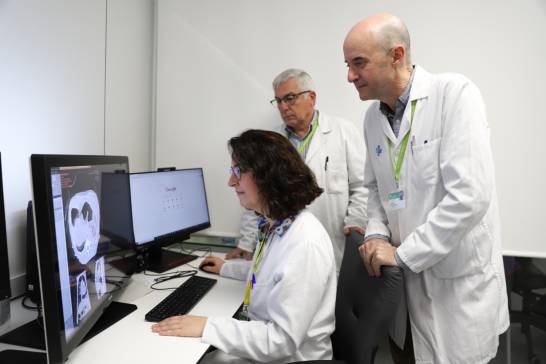A team of researchers from the Hospital Universitario Germans Trias i Pujol in Badalona (Barcelona) has discovered a new marker that makes it possible to predict whether a tuberculosis infection can progress to the development of the disease.
One of the many unknowns in the scientific community, which has lasted for many years, has to do with this disease. Specifically, about how and why infection with a particular bacillus (an elongated bacterium) eventually leads to the manifestation of the disease. Globally, only 10% of people infected end up developing it.
This discovery could accelerate the creation of a vaccine against tuberculosis
New research published in the journal pathogens described a mechanism of action of tuberculosis that becomes a new predictive marker of the disease. In the medium term, it could help accelerate the design of a vaccine that prevents the progression of a disease that affects 10 million people a year worldwide (about 4,000 in Spain and 1,000 in Catalonia).
The team discovered that the evolution from infection to disease repeats the same pattern: when the bacillus that infects the alveolar macrophage grows extracellularly, the lesion it causes increases disproportionately, generating small but multiple ‘daughter’ lesions.
There is a critical point, at which the infection degenerates into disease.
Pere-Joan Cardona, researcher in Microbiology and Parasitology
“There is a critical point, at which the infection degenerates into a disease, at which we go from a millimeter lesion to a centimeter one. Furthermore, this happens quickly, in a matter of 15 days, which greatly questions the idea we had of tuberculosis as a slow-generation disease”, explains Pere-Joan Cardona, researcher of Microbiology and Parasitology at the hospital.
Infection becomes disease in just 15 days
For Isabel Nogueira, researcher and radiologist, the identification by scanner images of a central lesion accompanied by multiple lesions around it “clearly mark the passage from contained tuberculosis to active progressive disease”.
Cardona’s team had already demonstrated this behavior more than a decade ago in studies carried out with mice, the only ones that until now have tried to explain this evolution. However, the consolidation of this theory came after verifying it in an identical way in monkeys, thanks to some images from a laboratory of the public health organization in England.
“The confirmation of this hypothesis provides a new parameter for the design of new vaccines, which would avoid the generation of these daughter lesions and, consequently, would prevent the disease”, adds Cardona.
Tuberculosis can be more serious in people with poor defenses
Tuberculosis is a disease that mainly affects the lungs and can be fatal if not treated, in addition to leaving sequelae in the form of pulmonary fibrosis and other respiratory problems that worsen the patient’s quality of life. In addition, it can be acute and more severe in people with few defenses, such as children, the elderly, people with the AIDS virus or with cancer or diabetes.
The infection is more widespread than previously thought, but once detected, effective treatment lasts about four months. The detection of the large lesion that evidences the existence of the disease is done by means of a chest X-ray, but, on the other hand, the infection can only be verified by means of the tuberculin skin test.
Reference:
Nogueira, I. et al. “Surveillance of Daughter Micronodule Formation Is a Key Factor for Vaccine Evaluation Using Experimental Models of Tuberculosis Infection in Monkeys”. pathogens (2023).
